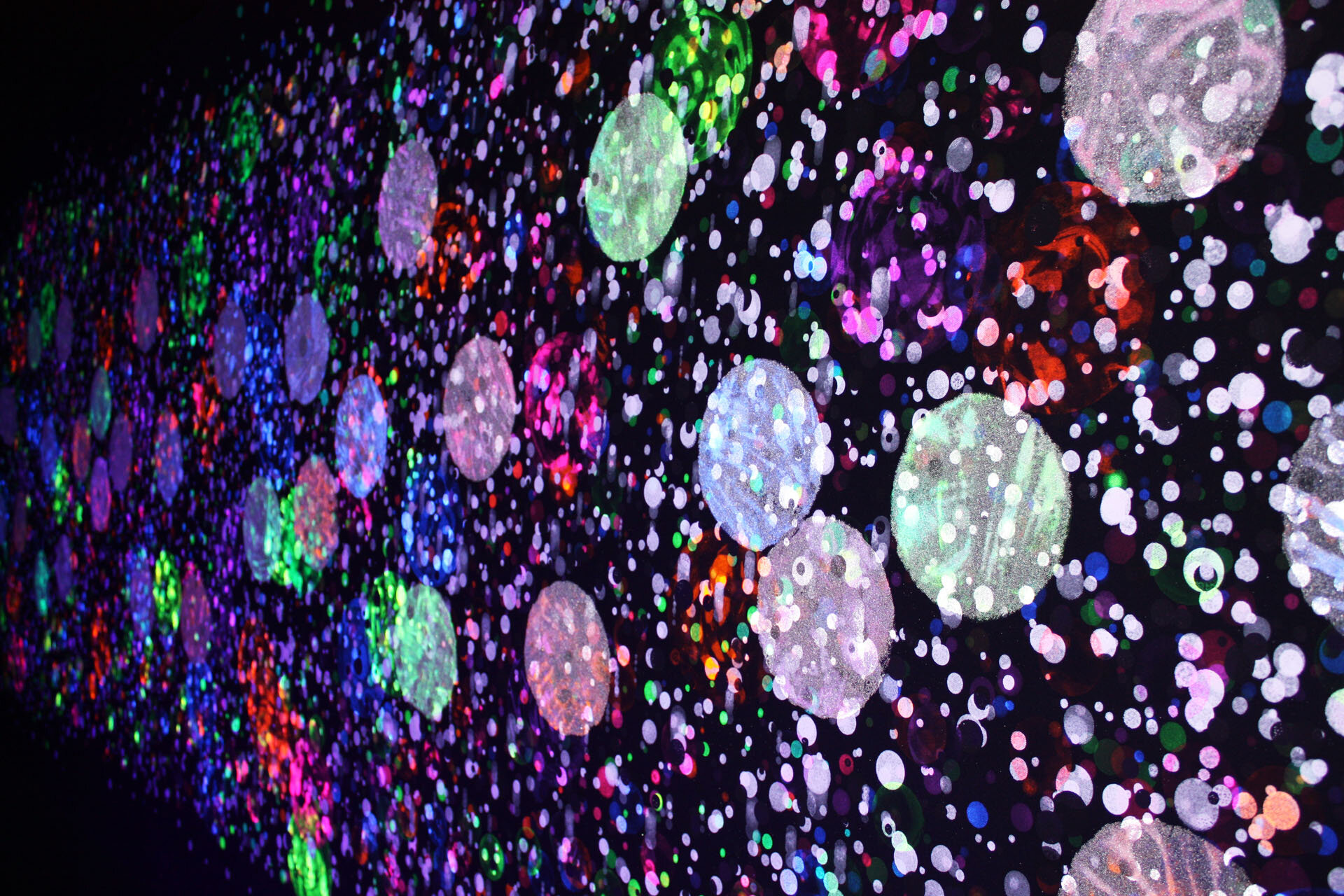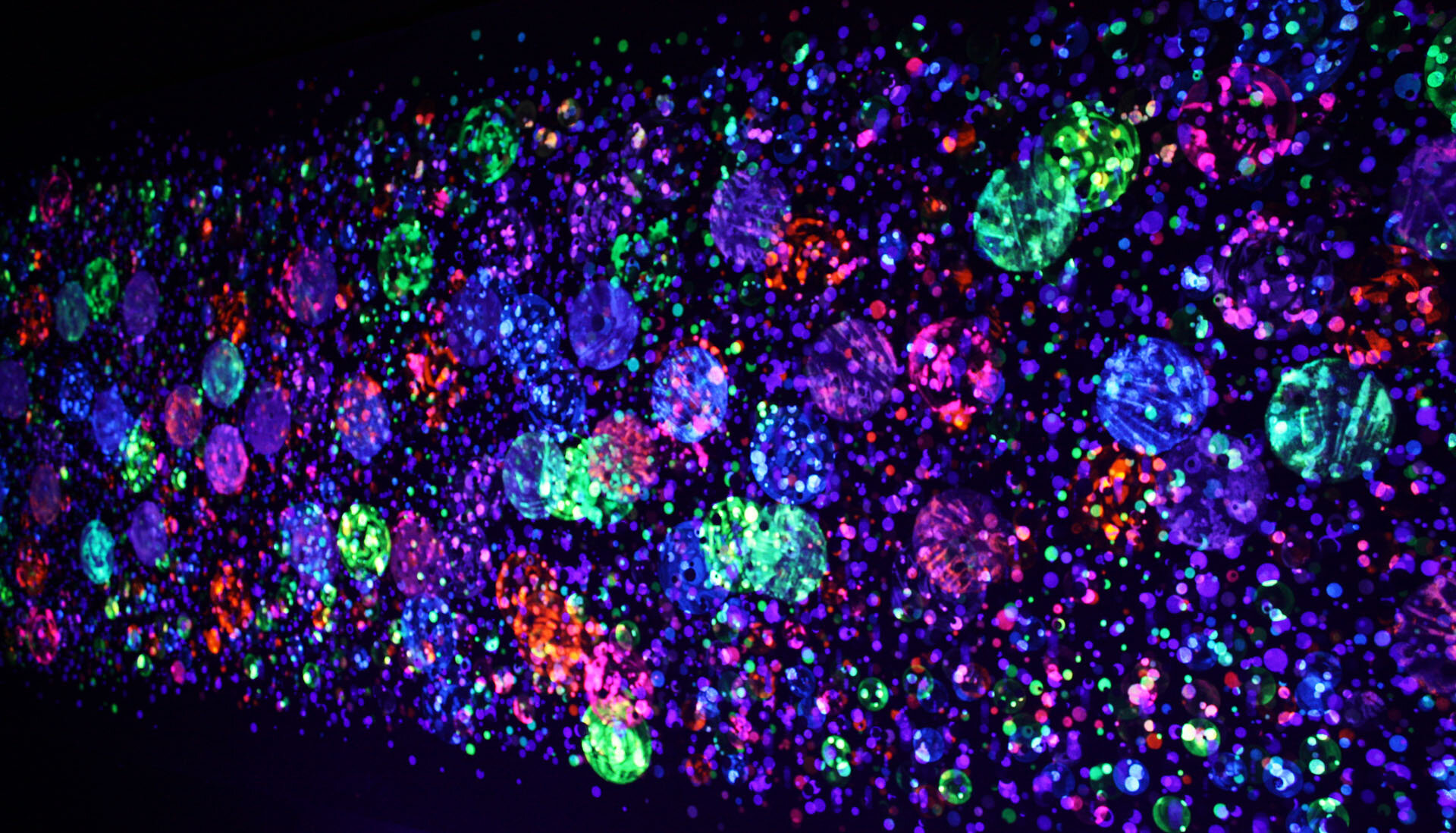
John E. Spears innovative artwork explores the properties of luminosity and the effects of light in an increasingly electric world. Spears is an American born artist from El Paso Texas.
—A selection of work done between 2019-2021
Biography in Brief
John E. Spears was born in El Paso, Texas and spent his summer months with his grandparents in Van Horn, Texas. This is where his grandmother took him for oil painting lessons at the age of ten to the old Clark Hotel. In 1975 he graduated with distinction in studio fine arts from Stanford University. He was taught by well-known artists Nathan Oliveira and Frank Lobdell. Upon graduating from Stanford, he established a studio in San Francisco and completed numerous commissions on the West Coast, some of which included Apple Computer’s first headquarters in Cupertino, CA, Artelonics and Price Waterhouse. His works were selected in the international competition by the curator Henry Hopkins for the San Francisco Museum of Modern Art, and he also had a solo show at the San Jose Museum of Art. During the 1980's he moved to Santa Fe where he became the director of the largest indoor/outdoor gallery and sculpture garden in the Southwest, the Shidoni Gallery & Foundry.
During this period he furthered his exploration in the screen process as a method for painting. In the last 30 years he has resided on the East Coast in New Jersey and completed numerous commissions throughout the region including Nabisco Brands, Rutgers University, Montclair State University, George Segal Gallery, DuPont Corp., Ortho, Johnson & Johnson, Merck, Smith-Kline Beecham, HOK, Skidmore Owings & Merrill, the Hellier Group, IBM, Neustar and Turner Construction, to a name a few. He has shown in the Morristown Museum and the Hunterdon Museum in New Jersey as well as most recently in the Pennsylvania New Hope Arts Center.

The Process — Nobody’s doing it
Spears uses a revolutionary process of his invention which is known as “Screen-Painting.” So, what is this process and how is it uniquely different from traditional printmaking? Most of us have of heard of screen printing, which is typically a redundant color by number, multilayering series of designs which are used to create a single graphic image. Spears reinvented the wheel. How? By entirely diverging from this process. Mr. Spears uses the physical properties of the screen itself as his brush, rather than using a brush in its stay. The removal of the brush in all its limitations and standardizations in the fine arts, reveals the inherent value of his technique, which is not only an embodiment of the radicalness associated with ‘true’ fine art, but also contributes to the reinvigoration of the challenges faced by artists living in the digital age.
Day & Night: Illusions of Light
5 x 24
Let’s Dance
The public debut of the latest body of work occured in the spring of 2021. These stunning paintings (Left and Right) are in fact, the same piece of art. The lighting conditions under natural light are extraordinary, but these paintings hide a secret in plain sight. The sophistication of the pigments chemical formulas respond effectively to ultraviolet light. This piece is among the first in the U.V. series and because it’s only the tip of the spear, one may imagine what will be coming next.
Natural light
Two in One
It all begins with impressions, but first impressions take on a whole new meaning. The remarkable duality expressed by a single piece has been compared as being like “night and day” From a purely functional perspective, the effects are clear; with the flick of a switch the viewer is put in control of fine art like never before. The technique does not fight darkness to be seen, rather, it embraces the light.
U.V. Light Spectrum
Making the Mark — Spark
Medium
The screen’s surface is simply a vehicle to carry 100% non-toxic inks and paints across a screens surface; however, the action is live. Meaning, it is not just wet paint, it’s a fluid solution to the boundaries of traditional screen printing.
Spears put authenticity the back into the idea of printmaking. He creates images which are not duplicatable, as they are all one-of-a-kind handmade originals.
On the international stage there is no single living artist who does what he does, period.
Open Channels
The basic screen is a wooden frame with a taught, stretched nylon mesh. However, the freeform liberties that Mr. Spears has taken in his approach turns the whole idea of photosensitive chemical rendering on its head. Instead of burning an image into the screen using hazardous chemicals, Spears will often use an open screen i.e., blank screen in order to carry his paint without any kind of stencil whatsoever. This enables him in utility to work free hand and as a result the confines of the frame entirely disappear from the artwork. On the other end of his process lies the potentiality of an uncommon visual language.
Visual Vocabulary — Unspoken Language
Over the span of his career as an artist, Spears, like many artists, developed a lexicon of his own, but unlike many of his contemporaries, his visual language effectively communicates how patterns interact with other patterns. To draw upon just one example of how this functions, let us consider the following; a seemingly straightforward design of linear geometries. Think about a series of four-sided polygons that are equal in both proportion and distance to one another. The diamond like shapes appear to be compositionally arranged in a checkered manner just as they look on the screen, but that is only the first registration.
An orange tinted lens reveals true color values.
Furthermore, as the phases of the registration progress the relationship between each drop becomes infinitely more complex. This begs the question why do these phenomena occur? The answer is a complex one, and yet it is rooted in the perceived simplicity of the original pattern and because patterns occur naturally, it is possible to tessellate the image to any variances of corresponding degrees. Therefore, the affect resembles elements that are found in nature i.e., the fractural—a pattern that repeats in juxtapositions unto the point that the entire design is perceived as being greater than the initial screen.
On a psychological level, the experience may be likened to pattern recognition processes which multiples subjective, visual meaning exponentially. Thus, a kind of transmutation of the pattern produces new patterns within a shared space. The rotation of any given screen then manifests with unexpected results because these shapes draw upon the brain’s natural proclivities to establish a semblance of order and thereby vacillates in its own interpretations; simultaneously constructing or deconstructing the artwork. In other words, one’s ability to acquiesce meaning relies upon a similar mechanism of cognitive functionality which is the rapid assigning of new meanings from complex abstractions.

Cosmic Veil






Beyond II







Scale –
Big visions, in all places
It is nearly impossible to not remark upon the sheer size of these screen-paintings because they are towering colossi, in conception, in presence, and in variance. This is due in part to some of John Spears’ early clientele base, the owners of corporate or commercial office buildings.
Scalability is key with any artwork and for Spears’s size is no small matter. 120-foot-long pieces are striking achievements for a painter of any sort, but not to worry there has always been room enough for the private collector too. Private residences present equally complex challenges. Each location is unique, and so is every piece. Paintings are tailored to please even the most discerning designer’s eye; the only limit is one’s imagination.
U.V. Sensitive Pigments -
Spears developed a process of his own, but he also created pigments of his own alongside his explorations in light of every new discovery found in his painting processes. The prospect of creating a completely original pallet of pigments can be a daunting undertaking; however, the chemical fashioning of colors which interact reflexively with one another requires an unbelievable multiplexity of perceptual knowledge.
Linear Accelerator (U.V. Exposure)
Material Sciences & Apex Fabrications -
The cutting edge has never been so sharp. Manipulating the properties of light is also achieved by knowing the threshold of dispersion. The embedding of glass nanospheres directly into the paint (as seen in the ‘bars’ of the images above) changes the contour of how light is refracted because on a microscopic level photon particles endlessly exchange around the glass spheres. Thus, producing an unparalleled effect of motion in selected areas.
In Natural Light
What appears as opaque then too begins to float atop the surface of the canvas; however, the effects of the spheres also serve in toning the intensity of the colors because of the interplay with color theory and optical adjustment times. Thereby, generating a third depth of field element in the finished product.
One Way or Another
Hidden Chaos - Natural Light
The breakthroughs in his color composites not only accomplish this feat, but also engender incomparable variations of color values. Meaning, it is impossible to simply grab an off-the-shelf product that communicates any single color in Spears’s arsenal. The unclassifiable nature of these pigments defies the laws of color theory because it utilizes the gaps in the ‘theories’ of color. This is as much as an art as it is a science.
Shifting the Spectrum -
The dynamism at work is… complicated, but it’s not magic, it’s science. Although, it certainly feels like magic to most lay person(s) understanding of color, let alone to the majority of working artists today. Simply said, human beings usually have three cones in our eyes with which we use to see the primary colors as well as the different values and hues which exist between true black and white tones. The areas in which cones overlap allow us to see the difference between variations of colors.
Carnival II
Architectural & Site-Specific Art Installations - A Property’s Priorities
Over the years, John Spears’ work has colored the walls, ceilings, and floors of some the largest and also some of the most challenging environments that any artist could exhibit their work: corporate offices… (Click on the link below)
Seeing is Believing
Behind the Screen - By Scott Reamer
Night time Celebration
Research & Development -
This is only the beginning on the road to the next big discovery…
Opt In
Feel free to contact us anytime. If you have questions concerning the artwork, comments for the Artist or are interested in attaining information about private purchasing, simply fill out the fields below. For any formal inquiries, opting in is the suggested approach. We do not share your private information with any third parties under any circumstance. Rest assured that opting in does not require a subscription nor will you be bombarded with newsletters or emails. However, opting in will grant you exclusive access to information regarding upcoming events, exhibitions, or showcasing of new work. You may elect to follow Spears on social media to see what new developments are in progress.
johnspearsart@gmail.com
—
Flemington, NJ

















